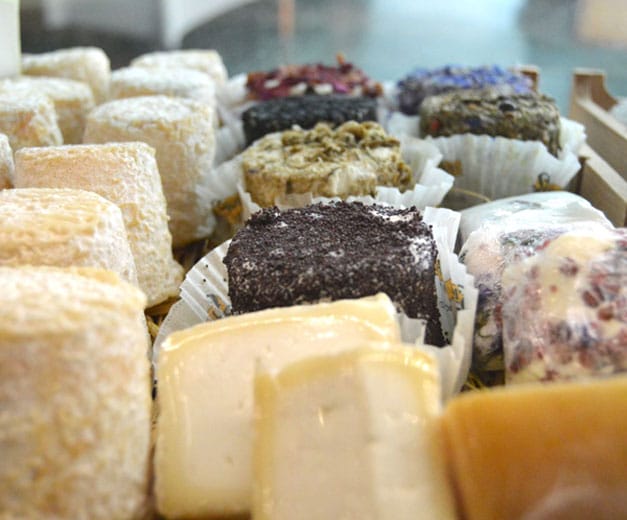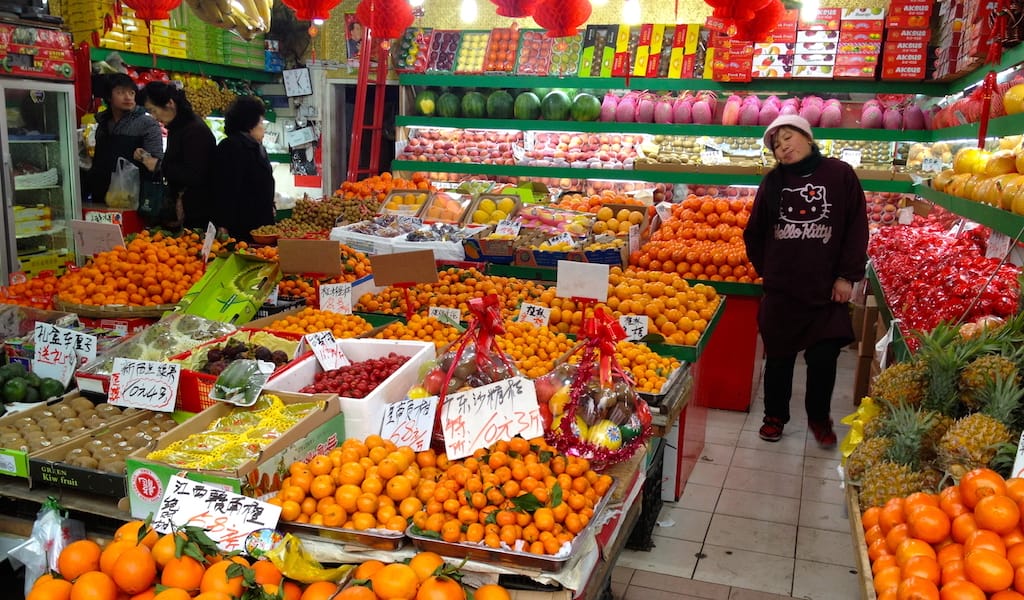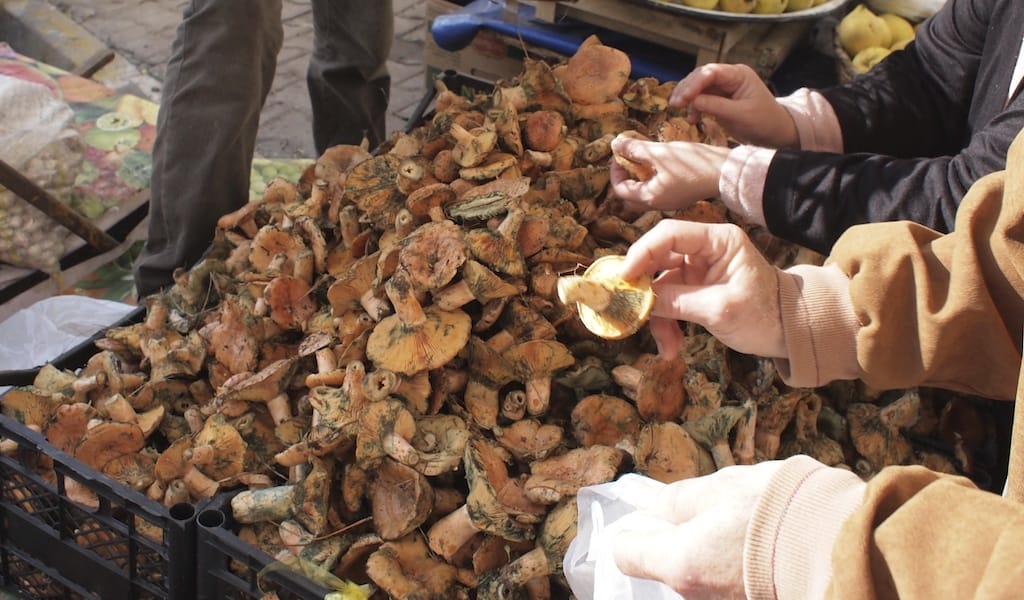Update: Poncelet Cheese Bar is sadly no longer open.
Many gastronauts come to Barcelona in search of tapas or cutting-edge cooking, but rarely cheese. We think that should change. Catalonia, after all, produces the greatest variety of artisan cheeses of all the regions in Spain, with more than 150 kinds at last count, many of them made by small producers or in milk cooperatives in the mountains using both pasteurized and raw milk from cows, sheep or goats. While in the past, in order to taste these cheeses, one had to travel to the often-tiny village where a specific cheese was made, nowadays it’s much easier to find them at markets, specialized shops, restaurants and bars in Barcelona.
To better understand the evolution of Catalan cheesemaking and the vast array of artisan cheeses available today, we spoke with Eva Vila, a highly accomplished affineur – the person who receives cheese from the producer and cares for it and ages it to get it to the perfect condition for the consumer. She is the manager of La Teca de Vila Viniteca, a highly regarded gourmet food and wine shop owned by her family since 1932, with its own cavas expressly for aging cheese. Eva explained to us how in cities like Barcelona, during the 1960s and 1970s, small neighborhood food shops were replaced by bigger supermarket chains, which began offering industrially produced cheese. These included classic cheeses like Manchego, Idiazabal (Basque, smoked) and Cabrales (Asturian, blue). The craft versions of these cheeses could still be found in old shops, however, the variety of traditional Catalan cheeses in general was significantly reduced.
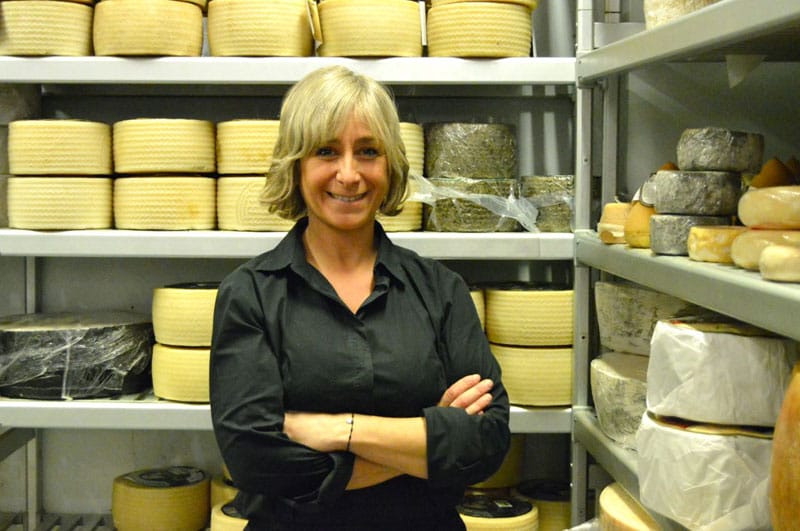
The earliest records of Catalan cheese date back to the Middle Ages, but cheesemaking in the region likely goes back much, much further, since we know that this kind of dairy preservation has existed in some form for at least 5,000 years and Catalonia has been populated by Phoenicians, Greeks and, of course, Romans, among other cheesemaking peoples. The fall of the Roman Empire also saw the disappearance of many food traditions, but by the Middle Ages, the first Christian monks and nuns began recording recipes and techniques of their own.
The oldest documented Catalan cheeses are mató, serrat and the singular tupí. Soft, spreadable, ricotta-like mató is very easy to make and is usually made from cow’s milk but occasionally also goat’s milk. In medieval times, it was served with honey in the dessert called mel i mató, and this preparation is still commonly offered today in cheese shops and traditional restaurants throughout Catalonia.
Serrat is an intensely flavored, round, compact (its name derives from the word cerrado, or “closed,” for its structure), washed-rind sheep’s milk cheese with an exterior that is traditionally decorated with various drawings and shapes. It’s aged like Manchego and is similar in taste and texture but smaller. Produced since the 10th century, serrat was once primarily made by Pyrenees farmers and shepherds for their own consumption and for trade. Among the very few producers making a true serrat these days are Ca de Tunica, with its super-young but old-style Serrat de Gelada, and Mas d’Eroles, with the Serrat de Corroncui, both using sheep’s milk from local breeds Txiqueta and Ripollesa in the village of Corroncui in the Pyrenees.
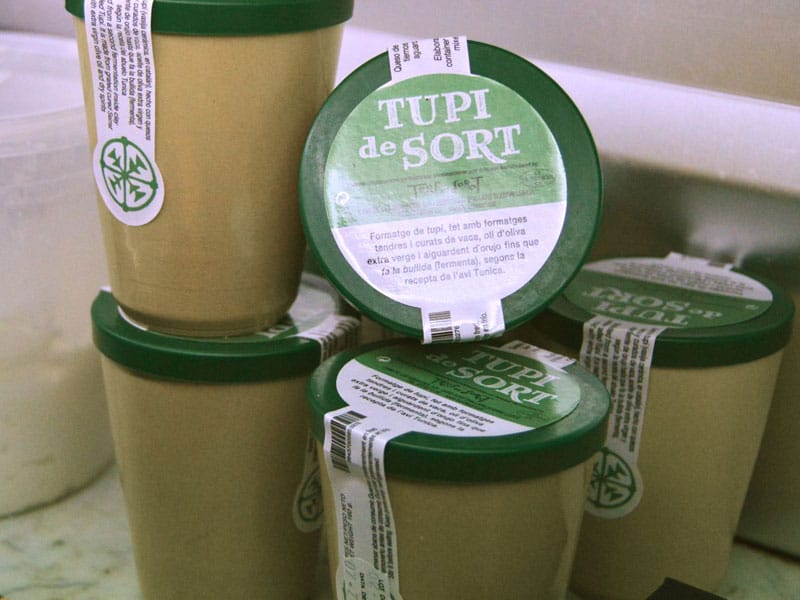
The pungent, spicy and creamy tupí has origins as old as those of serrat and was made by the same shepherds and farmers in the mountains. They put leftover and overly mature bits of serrat in a clay vessel known as a tupí and mixed them with a strong liquor like orujo (grappa), anis or ratafía. Many modern dairies make their own tupí and sell the cheese in small clay vessels. A couple of brands to look out for are Tupi de Sort and Tupí d’Alba.
There are, of course, Catalan cheeses of more recent origin, many of which have a protected designation of origin. Alt Urgell i la Cerdanya DOP, made in the Pyrenees from Friesian cow’s milk from the Cadí Cooperative, matures at least 45 days, becoming very tender and creamy and pocked throughout with “eyes” (small holes). This particular cheese was produced beginning in the late 19th century, after the pest phylloxera wiped out most of the area’s grapevines and landowners turned the vineyards into pasture. The Cadí Cooperative, established in 1915, is the Pyrenees’ most important dairy association, producing butter and traditional cheeses such as tupí, mató, serrat and others. Fortunately, one no longer has to travel up to the mountains to try them.
 January 22, 2020 Auspicious Eating
January 22, 2020 Auspicious Eating
There’s a joy in staying in China’s big cities over the upcoming Lunar New Year […] Posted in Shanghai September 25, 2013 Renascença Clube
September 25, 2013 Renascença Clube
In the middle of the last century, upwardly mobile Afro-Brazilians were vexed by the […] Posted in Rio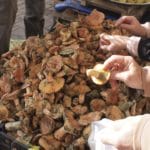 November 3, 2021 Hail Caesar’s
November 3, 2021 Hail Caesar’s
Editor's note: We're celebrating Mushroom Week at Culinary Backstreets, and today's […] Posted in Istanbul
Published on April 14, 2015
Related stories
January 22, 2020
ShanghaiThere’s a joy in staying in China’s big cities over the upcoming Lunar New Year (春节, chūnjié). As people start the “great migration” back to their ancestral hometowns to enjoy the annual reunion dinner (团圆饭, tuányuánfàn, or 年夜饭, nián yè fàn) with their family, Shanghai becomes a ghost town. Nearly every shop and restaurant closes up for at…
September 25, 2013
RioIn the middle of the last century, upwardly mobile Afro-Brazilians were vexed by the city’s segregated social scene. Even as they became lawyers and doctors and had the purchasing power to buy into some of the city’s finer establishments, the social clubs of the city, where a carioca could dance, play sports and mingle, would…
November 3, 2021
IstanbulEditor's note: We're celebrating Mushroom Week at Culinary Backstreets, and today's installment takes us to Istanbul's Belgrade Forest, where Turkey's leading wild mushroom expert has found some remarkable fungus specimens. “This would be front-page news in France!” Jilber raved, darting off between tall chestnut trees and oaks, obscured by a hazy steam that seemed to…







































